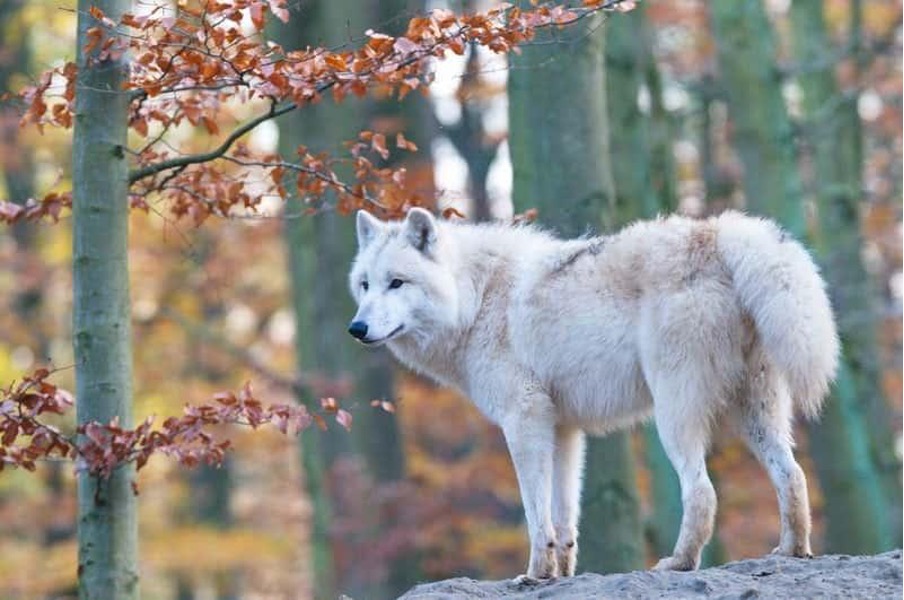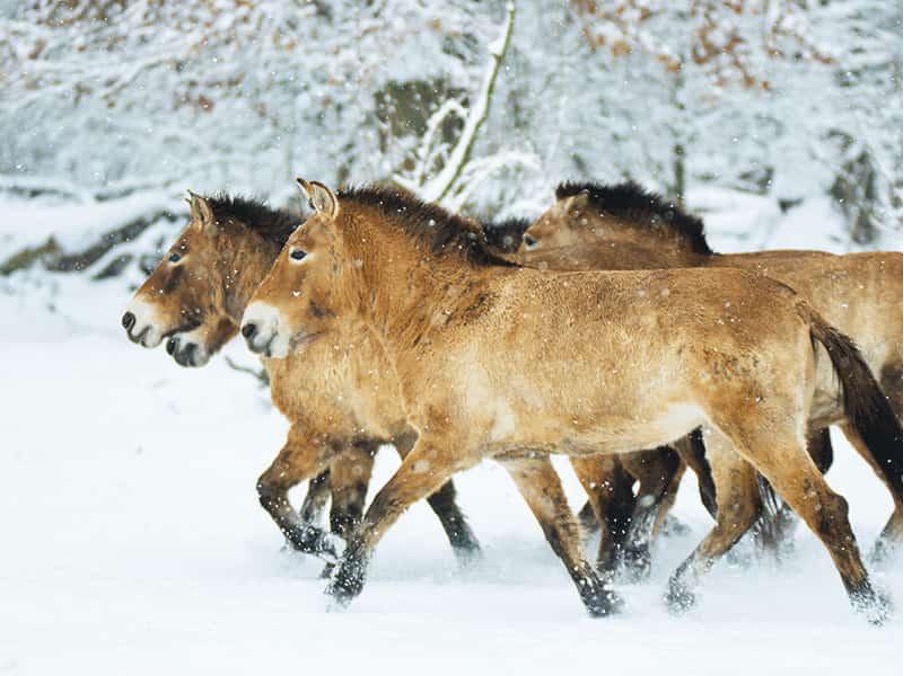Wisentgehege Springe: saving iconic Species from Extinction
Wisentgehege Springe: saving iconic Species from Extinction

Dead trees are replaced by young native oaks at Wisentgehege Springe.
The protective grid around the seedlings will remain for 30 years to protect them from herbivorous animals.
Photo: Pavlos Georgiadis
Located 30 km outside Hannover, Wisentgehege Springe is a place of recreation and a beautiful excursion destination. It’s an ideal place to discover and experience nature while learning to appreciate the beauty of the wildlife around you. The park is spread across 90 hectares of meadows and woodlands, providing a protected habitat for nearly 100 species, including several critically endangered ones.
Managed by our restoration partner Niedersächsische Landesforsten, Wisentgehege Springe is one of nine forest experience facilities in Lower Saxony. The park is a beloved destination for locals, attracting up to 180,000 visitors each year who come to marvel at an extraordinary display of animals and plants they may not normally come in contact with. It has, therefore, become a key spot for public education and raising awareness about nature conservation in the region. At the same time, its conservation projects have global significance, providing excellent opportunities for research that ensures the continued existence of biodiversity in the wild.
GamesForest.Club is supporting the wild park through a tree planting project that aims to preserve and expand the 300-year-old forest that provides food and shelter to the protected animals.
In recent years, the forest has felt the impacts of climate change, with drought and insect attacks killing a significant number of large trees. With the support of the gaming industry, the character of the landscape will be preserved by planting native oaks. A special heavy-duty grid will be installed around each seedling for 30 years to protect the tender bark and shoots of the young trees from browsing animals.
A Refuge for endangered Animal Species
The European Wood Bison

European wood bison at the Wisentgehege Springe wild park.
Its favourite diet consists of grasses, bark, leaves, and buds.
Photo: Wisentgehege Springe
The wild park borrows its name from one of its most iconic conservation programmes for the European wood bison, called wisent, which is the last representatives of wild cattle in Europe.
Back in 1928, their population was reduced to just 54 individuals on the continent. The species is still listed as “near threatened,” but its population is increasing thanks to successful reintroduction of bisons in wilderness areas through numerous projects supported by the wild park. Today, Wisentgehege Springe is one of the four regional centres for bison breeding in Germany.
Three Species of Wolves

A polar wolf at the Wisentgehege Springe wild park. Originating from the Canadian Arctic Islands and Greenland,
these animals live in packs, showing distinct social behaviours.
Photo: Wisentgehege Springe
Three species of wolves from different areas of the world are also protected in the enclosures of Wisentgehege Springe: the common Eurasian wolf (Canis lupus lupus), the timberwolf (Canis lupus lycaon) and the polar wolf (Canis lupus arctos).
Over time, protecting these species became necessary because their former hunting grounds have been gradually turned into grazing land. This changed things tremendously for wolves, pushing them to hunt farm animals. Nowadays, wolves are heavily hunted thanks to the “sneaky predator” myths that circulate about them.
The Mongolian Wild Horse

Przewalski‘s horses running at Wisentgehege Springe. They differ significantly from today‘s domesticated horses,
having 66 chromosomes – two more than domesticated horses. Their external appearance is striking as well.
They do not have a forelock but an erect mane, and they change coat and mane together every year.
Photo: Wisentgehege Springe
Another species saved from extinction due to conservation efforts at Wisentgehege Springe is the Mongolian wild horse, also called Przewalski’s horse. The last remaining populations of this wild horse were discovered in the Mongolian deserts in the second half of the 19th century.
In the following one hundred years, hunting and competition for grazing land have brought this noble species to the brink of extinction and the wild populations in nature were wiped out. It is only thanks to conservation programmes in wild reserves and zoos that this species still exists today, and several reintroduction projects are now underway.
These horses have been kept at Wisentgehege Springe since the late 1970s, and over 60 foals have been born inside the wild park since then. Springe horses have contributed to the establishment of free-roaming populations in Mongolia and China.
The importance of ex-situ (off-site) Conservation
According to the International Union for Nature Conservation, over 42,000 species are threatened with extinction around the world. Threats to this biodiversity include habitat loss and fragmentation, overexploitation, invasive species, pollution, diseases and climate change. The wild park Wisentgehege Springe is an excellent example of ex-situ conservation, aiming to support species’ survival in the wild and maintain their genetic diversity. The main goal is to increase the number of healthy individuals, create self-sustaining populations and ultimately remove a species from its threatened status.
Off-site conservation protects plants and animals outside of their natural habitats through a range of techniques, including gene banks, captive breeding and artificial propagation.
Ex-situ conservation measures are complementary to in-situ methods, such as reforestation and forest protection, which is always the primary objective. They provide an ‘insurance policy’ against extinction and play an important role in recovery programmes for endangered species and ecosystem restoration.